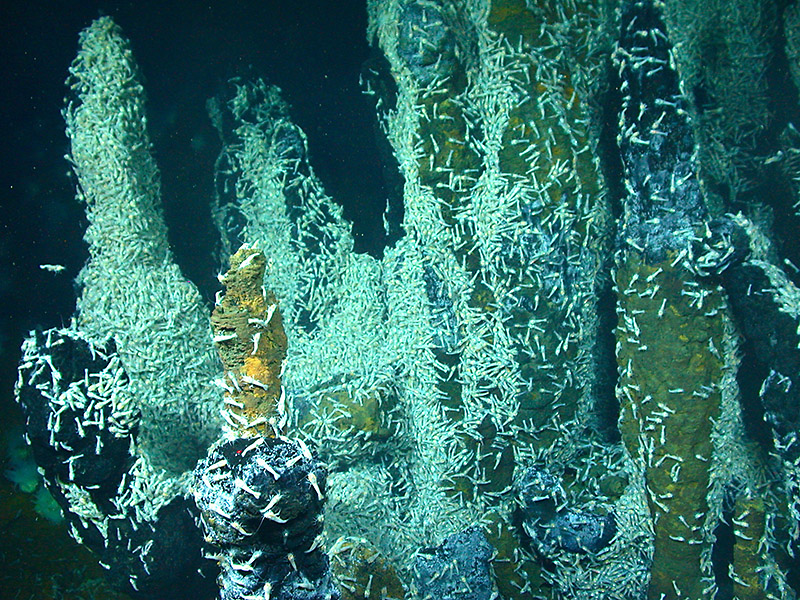Shrimp called Rimicaris hybisae crawl on the Von Damm Spire, located 7,500 feet (2,300 meters) underwater in the Caribbean. The shrimp live in symbiosis with bacteria. This fascinating ecosystem gives scientists insights into what kind of life could thrive in extreme environments elsewhere, such as Jupiter’s moon Europa. (Courtesy Chris German, WHOI/NSF, NASA/ROV Jason © 2012 Woods Hole Oceanographic Institution)
Home Shrimp called Rimicaris hybisae crawl on the Von Damm Spire, located 7,500 feet (2,300 meters) underwater in the Caribbean. The shrimp live in symbiosis with bacteria. This fascinating ecosystem gives scientists insights into what kind of life could thrive in extreme environments elsewhere, such as Jupiter’s moon Europa. (Courtesy Chris German, WHOI/NSF, NASA/ROV Jason © 2012 Woods Hole Oceanographic Institution) Shrimp called Rimicaris hybisae crawl on the Von Damm Spire, located 7,500 feet (2,300 meters) underwater in the Caribbean. The shrimp live in symbiosis with bacteria. This fascinating ecosystem gives scientists insights into what kind of life could thrive in extreme environments elsewhere, such as Jupiter's moon Europa. (Courtesy Chris German, WHOI/NSF, NASA/ROV Jason © 2012 Woods Hole Oceanographic Institution)
Shrimp called Rimicaris hybisae crawl on the Von Damm Spire, located 7,500 feet (2,300 meters) underwater in the Caribbean. The shrimp live in symbiosis with bacteria. This fascinating ecosystem gives scientists insights into what kind of life could thrive in extreme environments elsewhere, such as Jupiter’s moon Europa. (Courtesy Chris German, WHOI/NSF, NASA/ROV Jason © 2012 Woods Hole Oceanographic Institution)



